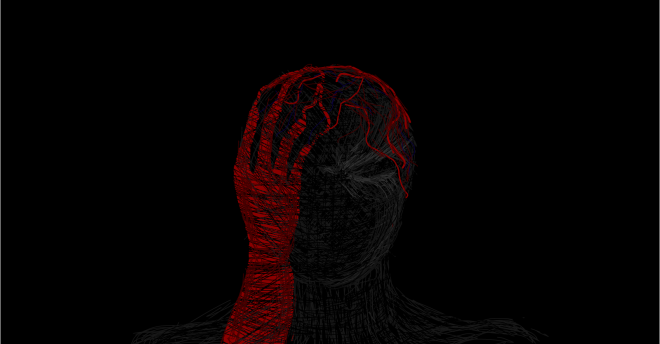Motion sickness afflicts a large number of gamers, and researchers are scratching their heads.
My experience:
I’ve been gaming since the dawn of the playstation one. Was always a geek and with my first chunk of money in the bank, right after secondary, I bought a PC.
I used to game on a regular basis for hours and hour never having any problems.
Few years ago my girlfriend buys me the game ‘Dishonoured’ for PS3. I had just recently bought the console and had very few games to play so I was as thrilled as a little boy on Christmas.
After playing the tutorial, I started to feel a bit queasy. As I played on I couldn’t cope with the increasing nausea and a massive migraine ensued.

I had to sleep for a few hours to get back to my normal self. That was my first confirmed case of Motion sickness while gaming.
After that incident I noticed that I felt uneasy ever time I played an open world game. I googled the symptoms and self-diagnosed myself. It was surprising to see that I wasn’t the only one to tango with this condition.
Scientific literature:
While I had these sensations on a screen, more and more people seem to be affected with Visual Head Gear like HTCVive and Oculus Rift etc etc.
S. Davis et al. (2014) in their review of cybersickness say:
In one study by Cobb, Nichols, Ramsey and Wilson (1999), 80%
of participants experienced cybersickness within the first ten
minutes of exposure to the virtual environment. This finding
demonstrates that, at least in some virtual environments,
cybersickness could be a widespread usability issue that could
impact on both the broader adoption of the technology but also the
continued improvement of the technology
This cybersickness phenomenon was first observed in extensive training of US fighter pilots using simulations. (S. Davis et al., 2014)
I personally couldn’t find any literature regarding these same effects when using normal monitors or a TV.

Van Emmerik M. L. et al. (2011) investigated points of view and their effects when changed in VR headset users.
While they noticed that proportion of objects in a virtual world does effect the users, the theory that is vastly believed to be true is that of Vection. Vection is the mismatch between visual cues and the vestibular sense. (S. Davis et al., 2014)
In laymen terms, your sense of balance, controlled by an organ in the ear, gets upset that even though your eyes see a lot of action and changes in landscape, your sense of balance doesn’t.
Our brain is especially put off when 3D images are used in our ‘revolutionary’ VR Headsets (Häkkinen, J. et al., 2006). A lot of research is being done in this regard, especially since most of these devices are hitting the mainstream market.
My final words:
I’m really anguished that little research is being done with regards to the effects of motion sickness when using a normal monitor.
If like me you suffer from the same condition, I found out that playing games that have a fixed camera point like MOBAs or platformers doesn’t make me sick. There are also over the counter medication which could help, but it sucks to take pills to play games.
Some other suggestions, thanks to Extra credits and their video about this topic are:
- Try to remove screen bob (running movement of the camera view point) – certain games have that as an option to turn off.
- Dim your screen
- Change your field of view – the larger your perspective is, the better.
- Switch off your room lights
- Limit your play time – duhhh!
- Ease on your caffiene addiction – don’t take coffee, tea or cola. It might help a few of you.
Ages ago I also read somewhere that by gradually increasing the exposure to games that make you sick will ultimately make you more resiliant to the sickness.
Whilst researching I bumped into a friendly blogger named Two Happy Cats (link to his post) who like me, knows the pains of it all. Go check it out.
References:
- Davis, S., Nesbitt, K. and Nalivaiko, E. (2014) ‘A Systematic Review of Cybersickness’, Proceedings of the 2014 Conference on Interactive Entertainment, IE2014, New York, NY, USA, ACM, p. 8:1–8:9 [Online]. DOI: 10.1145/2677758.2677780 (Accessed 24 December 2017).
- van Emmerik, M. L., de Vries, S. C. and Bos, J. E. (2011) ‘Internal and external fields of view affect cybersickness’, Displays, Visual Image Safety, vol. 32, no. 4, pp. 169–174 [Online]. DOI: 10.1016/j.displa.2010.11.003 (Accessed 24 December 2017).
- Häkkinen, J., Pölönen, M., Takatalo, J. and Nyman, G. (2006) ‘Simulator Sickness in Virtual Display Gaming: A Comparison of Stereoscopic and Non-stereoscopic Situations’, Proceedings of the 8th Conference on Human-computer Interaction with Mobile Devices and Services, MobileHCI ’06, New York, NY, USA, ACM, pp. 227–230 [Online]. DOI: 10.1145/1152215.1152263 (Accessed 24 December 2017).

